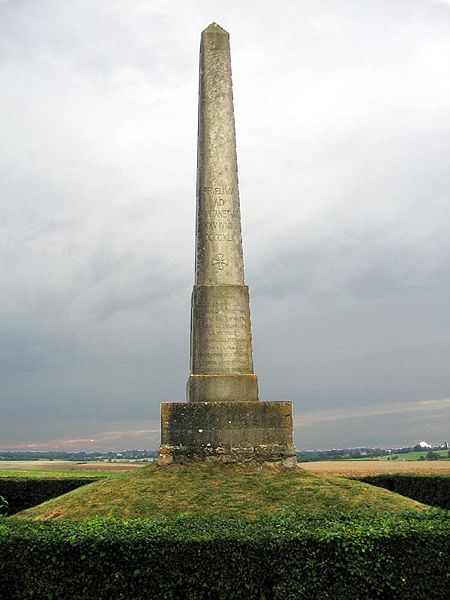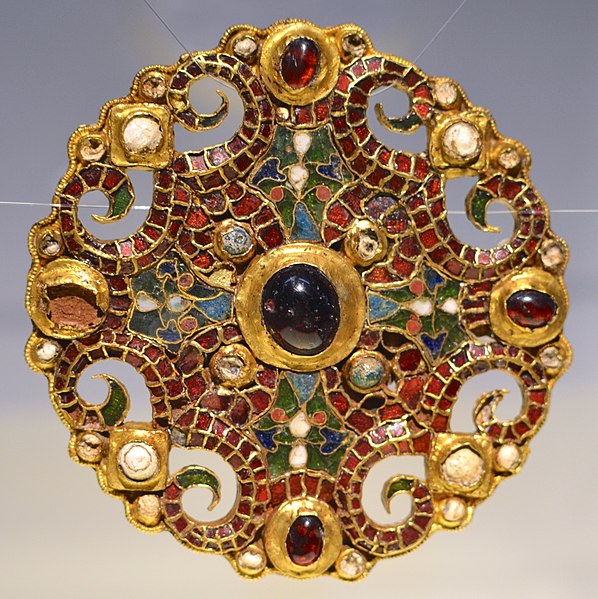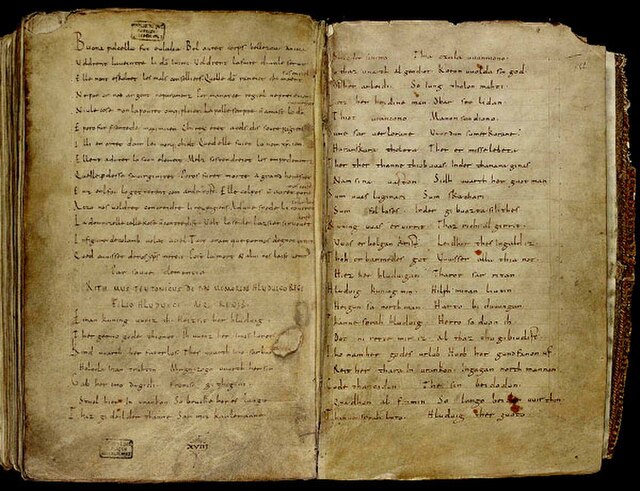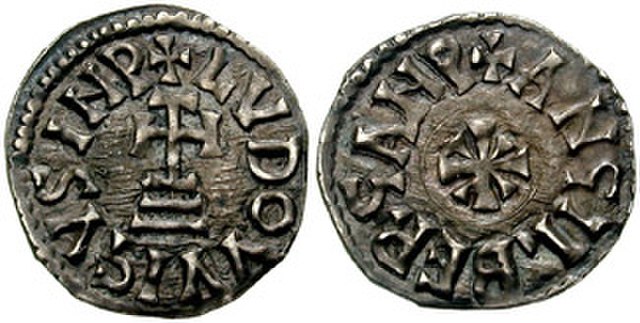The three-year Carolingian Civil War culminated in the decisive Battle of Fontenoy, also called the Battle of Fontenoy-en-Puisaye, fought at Fontenoy, near Auxerre, on 25 June 841. The war was fought to decide the territorial inheritances of Charlemagne's grandsons—the division of the Carolingian Empire among the three surviving sons of Louis the Pious. Despite Louis' provisions for succession, war broke out between his sons and nephews. The battle has been described as a major defeat for the allied forces of Lothair I of Italy and Pepin II of Aquitaine, and a victory for Charles the Bald and Louis the German. Hostilities dragged on for another two years until the Treaty of Verdun, which had a major influence on subsequent European history.
The battle as depicted in the fourteenth-century Grandes Chroniques de France.
Obelisk commemorating the Battle of Fontenoy.
The Carolingian Empire (800–887) was a Frankish-dominated empire in western and central Europe during the Early Middle Ages. It was ruled by the Carolingian dynasty, which had ruled as kings of the Franks since 751 and as kings of the Lombards in Italy from 774. In 800, the Frankish king Charlemagne was crowned emperor in Rome by Pope Leo III in an effort to transfer the Roman Empire from the Byzantine Empire to Western Europe. The Carolingian Empire is sometimes considered the first phase in the history of the Holy Roman Empire.
The Dorestad Brooch, Carolingian-style cloisonné jewelry from c. 800. Found in the Netherlands, 1969.
Copy of the Ludwigslied, an epic poem celebrating the victory of Louis III of West Francia over the Vikings
Interior of the Palatine Chapel in Aachen, Germany
A denarius minted by Prince Adelchis of Benevento in the name of Emperor Louis II and Empress Engelberga, showing the expansion of Carolingian authority in southern Italy which Louis achieved






